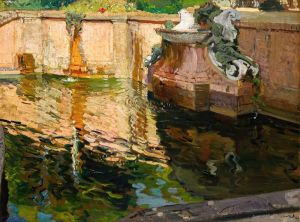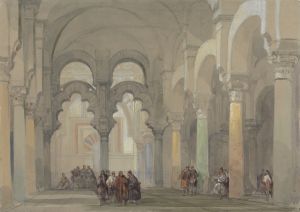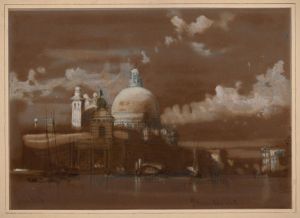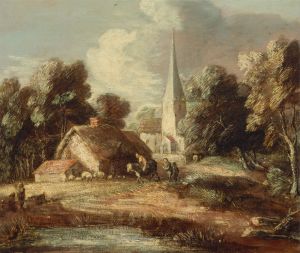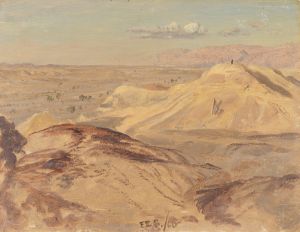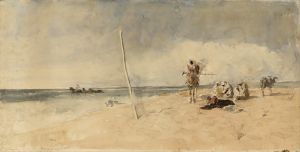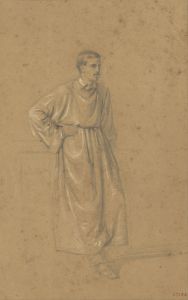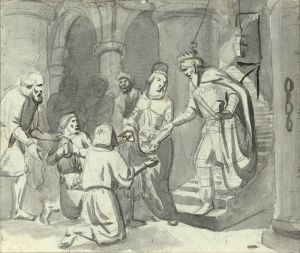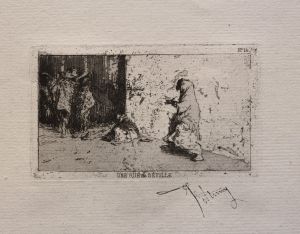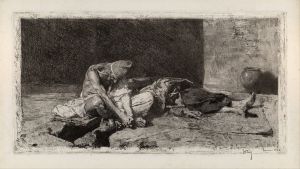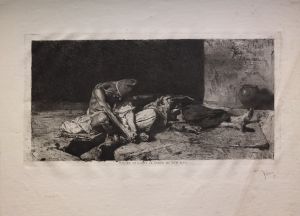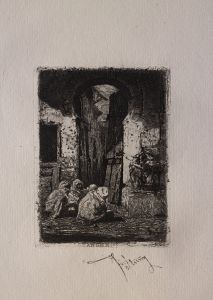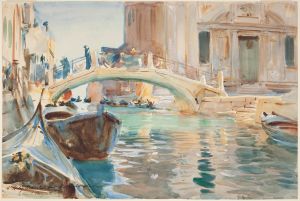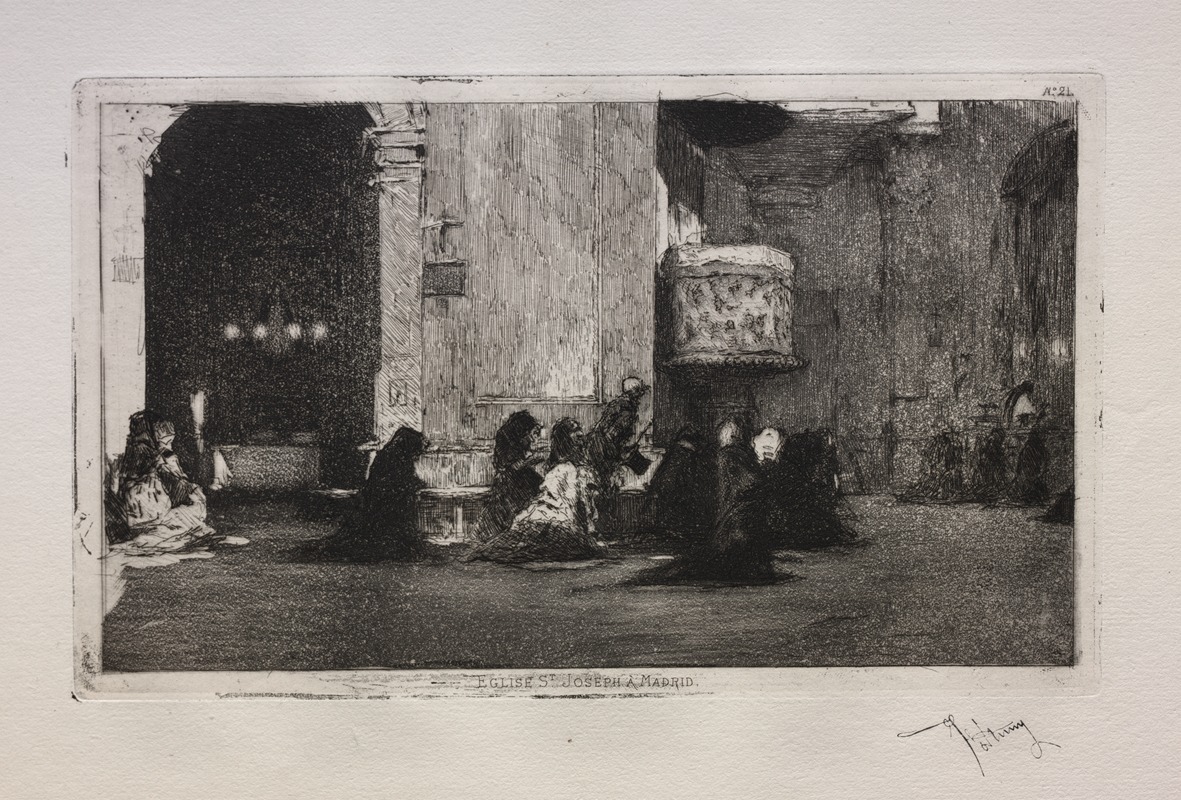
Saint Joseph Church, Madrid
A hand-painted replica of Mariano Fortuny Marsal’s masterpiece Saint Joseph Church, Madrid, meticulously crafted by professional artists to capture the true essence of the original. Each piece is created with museum-quality canvas and rare mineral pigments, carefully painted by experienced artists with delicate brushstrokes and rich, layered colors to perfectly recreate the texture of the original artwork. Unlike machine-printed reproductions, this hand-painted version brings the painting to life, infused with the artist’s emotions and skill in every stroke. Whether for personal collection or home decoration, it instantly elevates the artistic atmosphere of any space.
Mariano Fortuny Marsal, a renowned Spanish painter of the 19th century, is celebrated for his meticulous attention to detail and his ability to capture the essence of his subjects. One of his lesser-known works is "Saint Joseph Church, Madrid," which exemplifies his skill in architectural representation and his keen eye for the interplay of light and shadow.
Mariano Fortuny Marsal was born in Reus, Catalonia, in 1838. He showed an early aptitude for art, which led him to study at the prestigious Royal Academy of Fine Arts of San Fernando in Madrid. Fortuny's career was marked by his travels across Europe and North Africa, where he absorbed various artistic influences that enriched his work. He is best known for his genre paintings, historical scenes, and portraits, but his architectural works, such as "Saint Joseph Church, Madrid," also hold significant artistic value.
The painting "Saint Joseph Church, Madrid" captures the façade of the church, a notable example of Baroque architecture in the Spanish capital. The Church of Saint Joseph, or Iglesia de San José, is located on the Calle de Alcalá, one of Madrid's most famous streets. The church was originally built in the 18th century and has since been an important religious and cultural landmark in the city.
In Fortuny's depiction, the church's intricate architectural details are rendered with precision, showcasing his ability to convey the grandeur and complexity of Baroque design. The façade is characterized by its elaborate ornamentation, including columns, pilasters, and sculptural elements that are typical of the Baroque style. Fortuny's use of light and shadow enhances the three-dimensional quality of the structure, bringing the stonework to life on the canvas.
The painting also reflects Fortuny's interest in the atmospheric effects of light. He skillfully captures the way sunlight interacts with the building's surface, creating a dynamic interplay of highlights and shadows. This attention to light not only adds depth to the painting but also imbues it with a sense of realism and immediacy.
While "Saint Joseph Church, Madrid" may not be as widely recognized as some of Fortuny's other works, it is a testament to his versatility as an artist. His ability to transition from genre scenes and portraits to architectural subjects demonstrates his broad range of skills and his dedication to capturing the world around him with accuracy and artistry.
Fortuny's work, including this painting, has been influential in the development of Spanish art. His attention to detail and his innovative use of light have inspired subsequent generations of artists. Although Fortuny's life was tragically cut short when he died in 1874 at the age of 36, his legacy endures through his diverse body of work.
In summary, "Saint Joseph Church, Madrid" by Mariano Fortuny Marsal is a fine example of the artist's architectural painting. It showcases his technical skill and his ability to capture the essence of Baroque architecture through detailed rendering and masterful use of light. This painting, while not as famous as some of his other pieces, remains an important part of Fortuny's artistic legacy and a valuable representation of 19th-century Spanish art.





